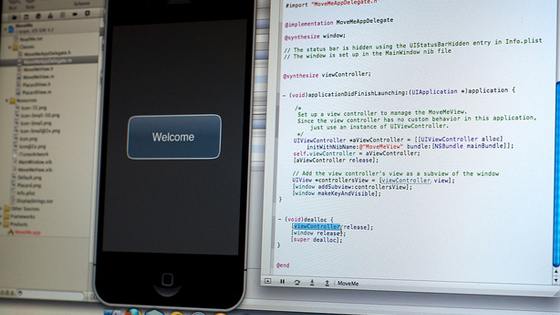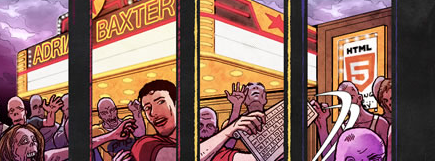The world of digital design is full of both young and experienced talent. Freelancing has slowly become a more affordable career path for many web designers and developers. But it?s not enough to just create pretty websites in HTML/CSS. You also need to have some sense in marketing a business!

There is a thin line between the responsibilities of a web designer and a freelancer. Some overlapping examples between the two jobs are design skills like Adobe Photoshop, Dreamweaver, and JavaScript. But you?ll also need to understand client relationships, basic time management, project organization, and a few other corporate-class ideas. It can be a tough, but I hope these tips will help you juggle the numerous tasks assigned into the freelancing world.
Never Overload Yourself
This is a big lesson which takes some practice before you can understand. Many young web designers are often eager to jump into the freelancing business and start earning money. Over time you pickup project after project, and soon you?ve got no time left for yourself. It?s a self-defeating cycle of endless stress.
You need to figure out what is realistic to accomplish in any given day/week/month. Each person?s schedule will be different depending on their obligations. But we can all find time for work, even just hours a day. So it?s only a matter of planning out a proper to-do list.

Manage what you can at first and slowly increase your workflow as time goes on. I started freelancing with 1-2 web projects per month and slowly moved up from there. This process gets easier as you meet more people and build credibility for your name. But you have to know when you?ve reached your limit and learn to say ?no? ? even when the additional work & money is tempting. It?s not worth the strain on your mental health and some clients will be understanding in waiting a few weeks for your services.
Practice New Skills
It?s important to prioritize your design skills first above all else. Working freelance is a privilege compared to the routine 9-5 lifestyle. As time pushes forward you may become complacent with such a schedule. But try to keep your passion for design in check and held at the utmost importance.
Each of us is coming into the web design field with a different skillset. Most beginners already understand HTML and even a small amount of CSS. It?s important to keep on practicing these languages even if you are well-versed.

The industry is always advancing, so there?s likely new trends to pick up on. And if you grow tired of the easy stuff why not challenge yourself? Try to master a new skill such as Adobe Photoshop, Illustrator, Fireworks, or even another language such as JavaScript. The HTML specs have also introduced new media elements such as native video/audio components.

Staying on top of your game will keep you ahead of the competition and surely improve the quality of your portfolio. It can become a distraction if you have too much work on your plate. So make sure between client work you take at least a few hours to brush up on some interesting topics. I prefer to spend a day or two researching into new ideas I?ve never studied before. This opens me up to a deeper understanding of web design which I can apply to future designs.
Work Out Steady Pricing
How much you charge on any given project will greatly reflect upon your experience. It?s crucial that you can pay bills at each month?s end! Managing your earnings can be an exhilarating process to some, much nicer than the cut-and-run weekly paycheck. You gain leverage and control over your financial life in areas many haven?t experienced before.
But don?t obsess over your prices and payment methods for too long. Clarify upfront with each client how much you?ll be getting paid and through which method. This pushes all the business talk out of the way so you can jump right into the design work. At the end of your day it may be wise to go over each contract again ? possibly a 5-10 minute rundown on your current status.
Relationship Building
We all know how important networking can be in the business world. Ultimately it?s who you know that will help you succeed and make a name for yourself in the design industry. You must spend some time networking your brand and getting your portfolio links out there. E-mails, social networks, online forums, and job boards are just a few places you can start out.

You don?t want client work to become an annoying chore in your day. Keep a healthy relationship with all your contacts. If your work is good, they will most likely come back for any future design needs. And positive word-of-mouth references are always helpful towards gaining steady business in the future.
How people find your work will greatly impact their first impressions. Make sure you present yourself in a compassionate and professional manner. You?ll impress even the toughest clients and make a strong name for yourself.
Focus on Individual Tasks
The months may grow overwhelming as your work piles up. Don?t let your focus wane too much off course, or you?ll find it difficult to get anything done. I find it helpful to break up the day into segments of focus. You could start with design and web layouts for a few hours, then switch to coding, and finally end with e-mails and other paperwork.

This is just one loose example schedule, but you should feel out whatever works best. The ability to hold a solid focus for a few hours is crucial ? even if you end up switching between different tasks over time. Ultimately you should be able to reflect on each day and feel at ease with the amount of work accomplished.
Conclusion
I hope this article can reach even a few aspiring freelancers. The career path can be stressful at times, but also extremely rewarding. You set your own hours and have the freedom to work with anybody you choose! The growth process is exhilarating, especially for graphic & web designers. If you have your own freelance management tips feel free to share with us below in the discussion area.
About the Author
Jake Rocheleau is a social media enthusiast and Internet entrepreneur. He can be followed on twitter - @jakerocheleau His presence on the web can be found at JakeRocheleau.com.
Here's some other articles that you will definitely find useful.
21 Examples of Subtle Textures and Patterns in Web Design

HTML5 Cheat Sheets

20 Inspiring Examples of Colorful Web Designs

Optimizing your Website for Social User Experience

White Usage in Web Design

Source: http://webdesignledger.com/tips/juggling-between-freelance-designer-and-business-owner
nba lockout over gone with the wind nba lockout news nba lockout news gifts for mom gifts for mom pepper spray
No comments:
Post a Comment
Note: Only a member of this blog may post a comment.